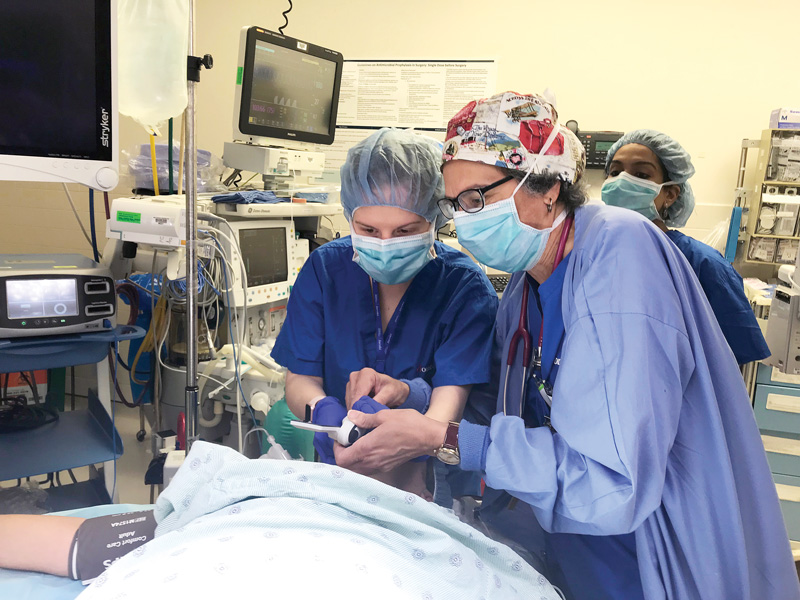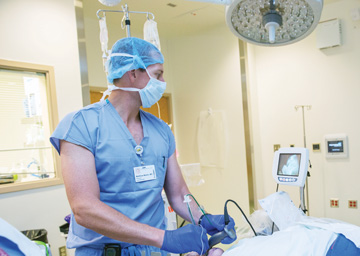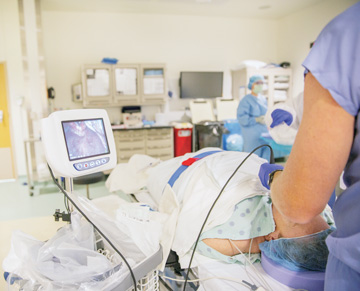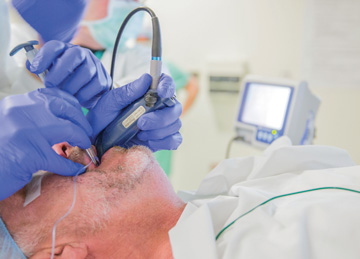Ask Mike MacKinnon, DNP, FNP-C, CRNA, about the benefits of video laryngoscopes, and he’s likely to tell you about a specific case he did several years ago. Dr. MacKinnon, an anesthesia provider for Northeastern Anesthesia in Show Low, Ariz., was working a laparoscopic appendectomy, an extremely common outpatient procedure, and getting ready to intubate a male patient in their early 40s with an ASA physical status of one. The patient’s airway exam proved unremarkable; he was able to open his mouth wide and he could complete an upper lip bite test.
Dr. MacKinnon assumed the case would proceed without incident, like the thousands he’s done before. But this patient had also never had anesthesia, and everything changed during the intubation. An abnormal epiglottis covered the patient’s airway and made it impossible to see, and therefore intubate, with the laryngoscope’s blade.
“There was a moment there when I thought, ‘Man, am I going to have to wake the patient up and abort the case?’” says Dr. MacKinnon. Luckily, the facility had a video laryngoscope, which they brought into the room and he was able to better see and manipulate the airway to intubate the patient. In the end, everything worked out. “The case was completed as planned,” says Dr. MacKinnon.
The entire incident highlighted a fundamental truth about providing anesthesia to ambulatory surgery patients. “In the outpatient surgery world, it’s those totally unexpected patients who make video laryngoscopes invaluable,” says Dr. MacKinnon.
.svg?sfvrsn=be606e78_3)




.svg?sfvrsn=56b2f850_5)